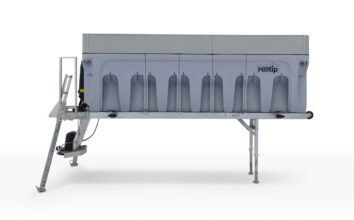Briggs & Stratton Corporation announces Storm Responder Portable Generator Sweepstakes
Hurricane activity this season is expected to be above average, according to a report released by Colorado State University. To help homeowners prepare for hurricane season, which started on June 1 and runs through Nov. 30, Briggs & Stratton Corporation is partnering with TV stations along the Gulf and Atlantic coasts to give away four 6,250-watt(1) Storm Responder portable generators per market.
“Partnering with local TV stations in hurricane-prone regions will ensure more families along the coasts stay safe in the event of a tropical storm or hurricane,” said Deadra Richelle-Purifoy, assistant marketing manager for Briggs & Stratton’s Power Products Group. “The Storm Responder was developed specifically for emergency situations. It features step-by-step startup and shutdown instructions printed directly on the unit, which helps provide peace of mind during a crisis.”
Introduced in spring 2013, the Storm Responder is designed for operation when a power outage occurs. The portable generator unit features a state-of-the-art control panel and is powered by a reliable Briggs & Stratton Professional Series OHV engine. Coupled with use instructions printed on the unit, simple diagrams indicate the correct oil and generator fuel types, what appliances can be plugged in, and where the portable generator should be placed when in use.
Portable generator safety
Carbon monoxide (CO) is a tasteless, colorless and odorless gas, and it is important to be mindful of its dangers while operating a portable generator. Even if exhaust fumes can’t be detected, the small engines that power portable units emit potentially harmful CO gas. If engine fumes aren’t able to exhaust in a safe manner, harmful effects — even death — can occur in a matter of minutes.
The best way to operate a portable generator safely is to read and follow the operator’s manual before starting the unit. Additional steps to ensure safe operation include:
Do not run portable generators inside homes, garages, basements, crawlspaces, sheds, or other partially enclosed spaces, even if using fans or opening doors and windows for ventilation. CO can quickly build up and linger for hours, even after the unit has been shut off.
Always place portable generators downwind and position engine exhaust away from occupied spaces.
Smoke alarms cannot detect CO gas, so install battery-operated or plug-in CO alarms with battery backup, according to the manufacturer’s instructions.
If you start to feel sick, dizzy, or weak while using a portable generator, shut it off and get to fresh air immediately. See a doctor as you may have CO poisoning.
Visit www.briggsandstratton.com/SafetyFirst for more information on safely using a portable generator.
(1) This generator is rated in accordance with CSA (Canadian Standards Association) standard C22.2 No. 100-04 (motors and generators).


